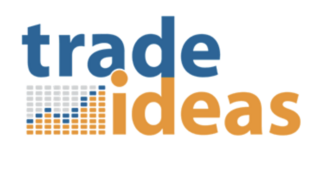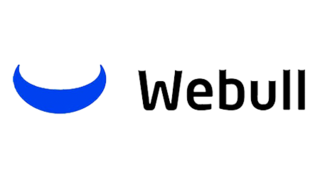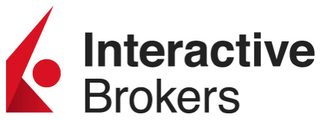10 Best Technical Analysis Software for Trading
Investors who trade financial assets like stocks on their own need tools to analyze the securities they are looking to buy or sell. The ability to evaluate stock trends and trading patterns is known as technical analysis.
Traders use charting and other analysis tools to make informed decisions on whether to buy or sell stocks, ETFs, options, currencies, crypto and other types of investment vehicles.
Technical analysis and trading tools — and even some of the best online stock trading platforms — are designed to help traders evaluate trends while leaving emotion out of trading decisions. They also generally provide educational materials to help investors get the most out of the information these tools provide. But keep in mind that most financial advisors recommend a buy and hold strategy as opposed to frequent trading, since the latter can be risky, especially for less experienced investors.
To help you determine which tools and sites best fit your needs, we've reviewed some of the most popular options and what they offer, taking care to categorize them based on the types of securities and other investment vehicles they work best with. Read on to find out more.
Our Top Picks for Best Trading Software
- E*Trade – Best for Zero Commissions
- TradeStation – Best for Combined Trading and Technical Analysis
- TrendSpider – Best Smart Technical Analysis Software
- Trade Ideas – Best for Day Traders
- TradingView – Best Free Trading Analysis Software
- Webull – Best for Intermediate and Advanced Traders
- Fidelity – Best Full-Service Brokerage Platform
- Lightspeed – Best for Frequent Traders
- TD Ameritrade – Best for Educational Tools
- Interactive Broker – Best for Research Tools
Best Trading Software Reviews
- Offers prebuilt portfolios and access to Morgan Stanley research
- Comprehensive platform offering investment and retirement accounts
- Vast educational resources available
- No international trading or direct crypto trading
- Fractional shares not widely available
Why we chose this platform: E*Trade is a powerful all-in-one platform for traders and investors who want to chart and analyze stocks, invest, save for retirement and more. E*Trade is now part of Morgan Stanley and offers users the resources of that major brokerage firm. E*Trade offers commission free trades on most U.S. listed stocks, ETFs, mutual funds and options.
E*Trade offers a number of charts and other tools on its site, including:
- Technical chart recognition automatically draws support and resistance lines to identify technical patterns in a stock
- Earnings Move Analyzer uses option prices and market data to measure sentiment and activity around earnings releases
- Risk/reward probabilities for option trades through the Snapshot Analysis tool
- Custom and preset scans based on a trader’s criteria using customizable data points
- Powerful charting tools that include over 145 charting and drawing tools
- Exit planning tools to help investors and traders develop an exit plan for securities
- Paper trading so investors can simulate trades and strategies without using real money
- One-click trading capabilities
- Sophisticated and extensive charting capabilities
- Zero commissions on many trades
- Robust simulated trading tools
- Easier access to educational resources, pricing and product details
- Pricing structure can be confusing
- The site's layout makes navigation difficult
Why we chose this platform: TradeStation combines a solid trading platform with access to high-quality market data and fast trading execution. In recent years, TradeStation, long considered a program for serious traders, has added features to help casual traders excel. These features include powerful trading technology for fast trade execution, a wealth of market data, online brokerage services and educational resources for investors with various levels of experience.
TradeStation allows investors to trade stocks, ETFs, options, futures and crypto. It offers cutting edge charting and analysis tools as well as a trading simulation tool that allows traders to test ideas before executing with real money. It offers zero commission trades on stocks, ETFs, futures and stock options. Its OptionsStation Pro tool also allows traders to test options strategies, while the Portfolio Maestro tool allows traders to backtest holding to assess portfolio risk.
- Robust suite of analysis tools for traders
- Offers automated charting, trendline analysis and dynamic price alerts
- Wide-ranging capabilities across various types of securities and exchanges
- Mobile app
- Requires a subscription
- Integrates with a limited number of brokerage platforms
Why we chose this platform: TrendSpider is a technical analysis tool that users subscribe to instead of an outgrowth of a trading platform. Its site touts the tool’s ability to help users make smarter and more efficient trading decisions. Some of the benefits of using TrendSpider include:
- Automation of manual analysis tasks
- Ultra-fast analysis, often delivered within a minute
- Analysis powered by algorithms, formulas and math instead of social media
- Help determining the best charting patterns
- Algorithms monitor charting in real-time to help users make timely trading decisions
TrendSpider covers over 55,000 assets and indexes across a wide array of exchanges, and its SignalStack tool allows users to link to its brokerage account as well. Its mobile app is available on both Android and iPhone.
- Subscribers get customization options based on their trading interests
- Can connect with trading platforms like E*Trade and Interactive Brokers
- Different subscription levels
- Robust features can lead traders to look at too many options at once
- No desktop version for Macs
Why we chose this platform: Trade Ideas offers many tools and a high level of functionality for day traders and other active traders. This includes customizable screening tools powered by artificial intelligence (AI) and a live trading room where users can interact with the community of other users and the Trade Ideas team. Its Pro Stock screener offers access to real-time data, a big plus for day traders.
The Trade Ideas platform is a software tool that offers users access to a multitude of analysis tools though its Stock Scanner, including:
- Charting
- Stock scanning with customizable and pre-built scans
- Real-time stock alerts based on criteria entered by the user
- Backtesting stocks to see how effective a given strategy would have been
- Stock entry and exit signals based on criteria set by users
- Performance tracking
- Simulated and live trading applications to help analyze trading ideas
- Market and stock news
- Cloud storage capabilities
Its new tool, Real Time Stock Racing, provides users a visual overview of scanning opportunities in the market. It also uses artificial intelligence to send useful trade alerts.
Trade Ideas connects directly with the E*Trade platform, allowing users to take advantage of $0 commission trading. And brokers looking for automatic trading capabilities will be glad to hear it can also connect with Interactive Brokers.
- Offers a free version with many great features
- Subscription options are reasonably priced
- Connects with TradeStation and several other brokerage platforms
- Doesn't support options trading
- No offline usage features
Why we chose this platform: TradingView is a charting platform and social network used by over 30 million traders. It tracks over 100 market indicators spanning across global stocks, currencies and cryptocurrencies. The platform offers many features you would expect from costlier alternatives, including solid tools for fundamental, economic and financial screening of stocks. Trading Tools stands out for its wide range of coverage of global stocks beyond just the U.S. markets.
TradingView offers a free trial plus subscriptions ranging from $15 to $60 per month with a range of additional features and data. It also offers the ability to quickly check and track stocks.
While this software may not be ideal for day traders, swing traders and investors will find thesoftware’s capabilities in the creation of watchlists and price action analysis useful.
- Low costs, including zero commission trades
- Access to advanced tools for traders and investors
- Connects with TradeStation and several other brokerage platforms
- No access to mutual funds
- Can only deposit and withdraw funds from an account via bank transfers
Why we chose this platform: Webull is primarily a trading platform, though it does offer access to some robust charting tools for traders. It also has a paper trading feature that allows users to test out trading ideas in a simulated format before risking real money.
Webull touts $0 commissions and no account minimums. The company says that everyone gets smart tools for smart investing and allows trading access to stocks including fractional shares, options, ETFs OTC securities and crypto. It also offers IRA and taxable brokerage accounts.
Webull has advanced charting and screening tools that allow investors and traders to analyze market activity across geographic regions and investment types. These features are available through desktop as well as Webull's mobile app. For crypto traders, the site also offers direct access to a number of cryptocurrencies.
A potential downside for newer and inexperienced traders is a lack of educational resources available on the site. Additionally, the lack of access to mutual funds can be a detriment to newer traders who hold mutual funds as a primary investment while looking to transition to other types of trading all on the same platform.
Read our full Webull review to learn more.
- Low overall costs for most types of investments
- Solid trading execution
- Strong research and screening tools
- Access to strong portfolio analysis tools
- Ability to invest in a variety of accounts and asset types
- No access to futures commodities or crypto (crypto is coming though)
- Trading costs are high if traders need to use a broker to execute them
Why we chose this platform: Fidelity Investments, one of the largest U.S. brokerage firms, offers a full line of investment services, account options and investment types for various types of investors.
Fidelity provides information, articles, videos and webinars around using technical analysis and charting tools. It also offers portfolio analysis tools, stock screeners and calculators to help investors analyze stocks and other investments. A similar section of its website centers around stock analysis fundamentals.
While Fidelity doesn't currently offer investors access to crypto trading, its site indicates this capability will be coming soon. The site does include some educational tools around crypto investing. Those interested in trading crypto with Fidelity can put their name on a waiting list.
For a more in-depth look at this platform, read our full Fidelity review.
- Lower costs for frequent traders
- Offers futures trading
- Trading and analysis tools limited to stocks, ETFs, options and futures
- High account minimums: $10k on web and mobile, $25k via software
- High costs overall
Why we chose this platform: Lightspeed is designed for frequent traders. Unlike some other platforms, it has kept its securities offering narrow and provides a highly customizable, downloadable trading program called Lightspeed Trader.
Lightspeed Trader is a downloadable trading app that features a selection of technical indicators, drawing tools and different chart types traders can use to analyze potential trades.
Unlike other platforms, which support trading with a broad spectrum of securities, crypto and other asset types, Lightspeed supports only stocks, options and futures trading. This makes the tool useful to a smaller pool of traders.
Lightspeed's research and analysis tools, include:
- Market scanning and filtering tool has a number of customizable screening criteria.
- Several trading idea generation tools.
- Access to third-party research via TipRanks, which evaluates recommendations by financial analysts and professionals.
- Access to the thinkorswim platform
- Personalized education features
- Solid customer service
- Supported by the resources of Charles Schwab
- No ability to trade crypto
- Fractional shares are not offered
- Acquisition by Charles Schwab could impact features in the future
Why we chose this platform: TD Ameritrade is a full service brokerage platform with capabilities useful to long-term investors and frequent traders. Its customer service team is well regarded and generally offers quick responses and resolution to user inquiries. The platform also offers a wide range of educational resources for traders and investors, including option screening tools, trading idea generators and a variety of research tools.
TD Ameritrade's flagship program for frequent traders, the thinkorswim platform, offers advanced charting capabilities, access to third-party fundamental data on stocks, options statistics and real-time market news from the TD Ameritrade Network.
TD Ameritrade is also one of a few brokers that offer backtesting capabilities, which allow traders to test trades against historical data to see how they would have performed.. While there is no guarantee that the past will repeat itself, this type of analysis can be helpful to traders in visualizing how a security might react to different types of market conditions.
TD Ameritrade was acquired by Charles Schwab several years ago. One of the first things Schwab did was to announce that the thinkorswim platform would remain available.
- One of the widest ranges of assets available
- Low commission and margin rates
- A wide range of technical analysis and trading tools
- Serves both U.S. and global investors
- May be overwhelming to newer traders
- Some consider the website difficult to navigate
Why we chose this platform: Interactive Brokers offers a strong, comprehensive brokerage platform and a menu of solid research tools, calculators and other information for traders. Its Trader Workstation is a downloadable platform for traders.
Interactive Brokers offers a wide range of educational resources, research reports, tools and calculators to assist users in making trading decisions. It provides access to one of the widest range of investment assets of any of the major brokerage platforms. This includes stocks, ETFs, options, mutual funds, U.S. spot gold, hedge funds, a robo advisor, managed portfolios and others.
Interactive Brokers also offers margin trading, its research and charting tools have a solid reputation, and its commissions are reasonable overall.
Trading Software Guide
The following guide covers relevant information on technical analysis, including what it is, how trading software works and what to know before choosing a trading software.
What to know before choosing trading software
There are a number of trading software and online platforms available, each catering to traders with different levels of experience. To choose the best software for your situation, consider the following:
- Trading frequency and approach: Are you planning to day trade or will you use the software to support occasional trades as part of a long-term investing strategy? Generally frequent traders will need more sophisticated software tools, which are often pricier.
- Markets and investment vehicles: Have a clear idea of the markets or types of investment vehicles you are looking to invest in, which might include stocks, ETFs, options, futures, cryptocurrencies or others. Then, look at the types of investing vehicles the software supports before moving forward, especially if it isn’t free.
- Cost: Compare the cost of the software tools you are considering and decide how much you are willing to spend for the features you need.
What is technical analysis in trading?
In trading, technical analysis is a methodology for evaluating investment opportunities based on statistical trends gathered from trading activity, such as price movements and trading volume.
This differs from fundamental analysis, which looks at the valuation of an underlying business represented by its stock through the analysis of metrics like sales, earnings and the amount of debt on its balance sheet.
How does trading software work?
Trading software varies based on who creates it and how it is to be used. Many times trading software will be distributed by a trading platform, and the software will be proprietary to that platform. The software will interface with the trading platform, in many cases, to allow traders to place trades to buy and sell.
How much money do you need to start trading?
Minimum requirement to open an account and start trading will vary by trading platform. While some platforms have no account minimums, others may require between $1,000 to more than $5,000 to open an account.
Another factor that will influence how much money you need to start trading is the cost of the securities, crypto or other investment assets you are looking to buy.
Why is technical analysis important in trading?
Technical analysis helps traders identify pricing trends for different stocks and other investment assets they may be considering. When combined with fundamental analysis and other analytical tools, technical analysis can be a powerful tool for traders.
Trading Software FAQs
What is artificial intelligence trading software?
What do you use technical trading software for?
Is there any fee to maintain my software trading account?
What is the difference between investing and day trading?
How We Found the Best Trading Software
To find the best trading tools and software of the year, we started with a list of the most popular platforms and narrowed down our options based on the following:
- Scope of analytical features
- Cost
- Availability of educational resources
- Customer support
- Ease of use
Summary of the Best Trading Software of 2023
- E*Trade – Best for Zero Commissions
- TradeStation – Best for Combined Trading and Technical Analysis
- TrendSpider – Best Smart Technical Analysis Software
- Trade Ideas – Best for Day Traders
- TradingView – Best Free Trading Analysis Software
- Webull – Best for Intermediate and Advanced Traders
- Fidelity – Best Full-Service Brokerage Platform
- Lightspeed – Best for Frequent Traders
- TD Ameritrade – Best for Educational Tools
- Interactive Broker – Best for Research Tools

















